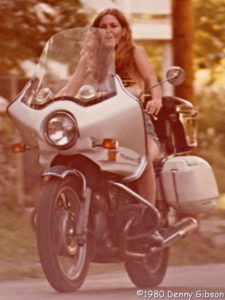 For once I didn’t have to snag a picture from the internet to show what my vehicle looked like. Plus, unlike the previous My Wheels chapter, there’s no need for paid models to spice things up. The photo at right shows my future ex-wife riding my future ex-motorcycle.
For once I didn’t have to snag a picture from the internet to show what my vehicle looked like. Plus, unlike the previous My Wheels chapter, there’s no need for paid models to spice things up. The photo at right shows my future ex-wife riding my future ex-motorcycle.
I hadn’t been exactly eager to sell the Chevelle and I was less than comfortable with a truck being my only transportation. My ears perked up when I heard that a neighbor’s brother was selling his motorcycle. In some corner of my mind I’d always wanted a BMW. I started to make that seem more generic by saying I’d always wanted a touring bike but the truth is that a BMW is the touring bike I had in mind. I remember seeing my first Beemer when, as a high school junior or senior, I stepped outside the school as a shiny black one rolled past. I recall its windshield and teardrop saddlebags. The slightly futuristic looking bags might have been part of the attraction but I believe what impressed me the most was how purposeful it looked. That bike was made to go places. It may have been the first vehicle that produced the phrase “road trip” in my mind. I took one test ride on the proffered three-toned motorcycle then bought it.
The motorcycle itself was blue. The after market faring and saddlebags were white and the trunk was black. With all that luggage space and the “made to go places” thinking of the previous paragraph, you might reasonably expect me to spend the next summer touring the country on two wheels. If that’s what you expect you will be disappointed. I did and I was.
I had a nearly new van that functioned as a camper which made it a natural choice for overnight trips. It was also a good people hauler and was a popular vehicle for group outings. That left the BMW with only solo journey duty and, since I was heavily involved with the lady in the photo, there weren’t many of those of any length. I crossed the river into Kentucky several times and made it to Indiana once or twice but the BMW spent almost all of its time in Ohio where I often did take the long — sometimes really long — way home from work.
I laid it down once. I was off to visit a friend living on a gravel road. I moved slow in the ruts that previous travelers had made. It was dry and those ruts had been pretty much cleared of gravel. I let my speed creep up. By the time a gravel ridge did appear, I’d let it creep too much. I shoved the bike away from me as it went down. In my mind’s eye, it rose high in the air while spinning over and over waiting for me to slide under it and be crushed. In reality it was probably never more than a foot off of the ground and flipped exactly one and a half times. It was enough to snap off the windshield and leave scratches on both bike and rider. My scratches healed and the bike’s weren’t bad enough to worry about. A new windshield was purchased.
I also got one ticket. A small group of friends were spending the weekend at one of the group’s family cottage near Indian Lake. I was taking one of the wives on a tour when flashing lights appeared behind us. I stopped and was told I had failed to stop at a stop sign. I really believed that all forward motion had ceased for a second and the officer seemed to agree. “But your feet didn’t touch the ground”, he said. We weren’t far from the cottage so my rider simply walked back while I followed the officer to the unmanned station which he unlocked. I was able to pay the fine which means it couldn’t have been more than $25 or so. As he wrote out a receipt, I commented that if they stopped every motorcyclist whose feet didn’t touch the ground they were probably making a lot of money. He looked up with a smile that stopped just short of a grin and said, “We do alright.”
The last story is about a malfunction. The clutch cable broke on the way to visit a friend in Cincinnati. I don’t recall whether it snapped as I pulled up to the light or started to pull away and I don’t recall whether it was panicked braking or a panicked key removal that killed the engine. Whatever the specifics, I found myself without a clutch at the bottom of the last hill to my friend’s house.
Shifting a moving motorcycle is no big deal and neither is getting it into neutral for a stop. Getting a motorcycle moving without a clutch is significantly more difficult. One way is to start the engine then get things rolling enough to slip into some gear. It’s rather easy going down hill, kind of tricky on level ground, and essentially impossible going up hill. I had my choice of the latter two. There was an empty parking lot about a half block way where I could get the bike started and ride it abound in circles. The reason for the circles was to time my arrival at the the light with it being green. I failed at least once but made it on the second or third attempt.
There were a few more malfunctions and probably a minor adventure or two but nothing big. As I recall, there were some electrical issues with the bike when I changed residences. I left it in a storage area at the apartment complex I was moving from and other things in my life kept its retrieval a low priority. It eventually just disappeared.
My Previous Wheels: Chapter 22 — 1970 Chevelle
My Next Wheels: Chapter 24 — 1983 Renault Alliance

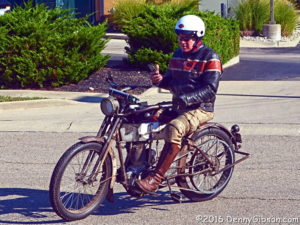

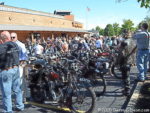
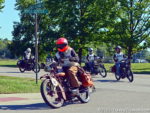
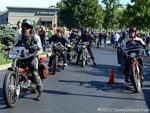
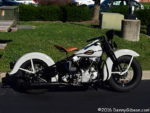
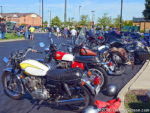
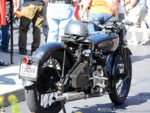
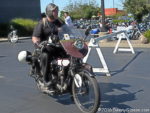
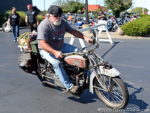
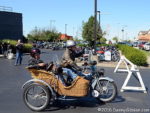
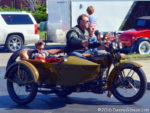

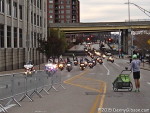
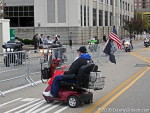
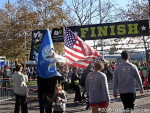
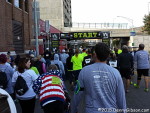
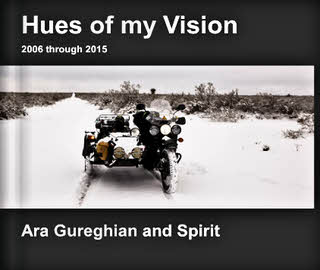 When I previewed this book in April, it was with the hope that a Kickstarter campaign would result in a bargain priced offset printed version. Ara had turned to the crowd funding site to facilitate pre-ordering the book in support of a cost saving bulk order. As noted in a mid-May update to
When I previewed this book in April, it was with the hope that a Kickstarter campaign would result in a bargain priced offset printed version. Ara had turned to the crowd funding site to facilitate pre-ordering the book in support of a cost saving bulk order. As noted in a mid-May update to 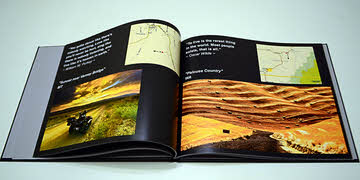 Not surprisingly, many of the photos are of America’s open spaces. Ara has visited and camped in some rather isolated spots and has captured some of their beauty. Canyons, lakes, and improbable shapes carved by wind and water are masterfully recorded and there are many gorgeous sunsets. A quote from Jo Walton really resonated with me:
Not surprisingly, many of the photos are of America’s open spaces. Ara has visited and camped in some rather isolated spots and has captured some of their beauty. Canyons, lakes, and improbable shapes carved by wind and water are masterfully recorded and there are many gorgeous sunsets. A quote from Jo Walton really resonated with me: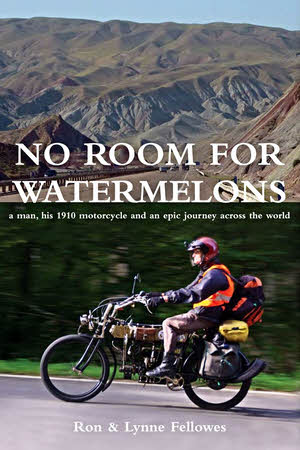 I don’t recall exactly when or even how I first discovered
I don’t recall exactly when or even how I first discovered 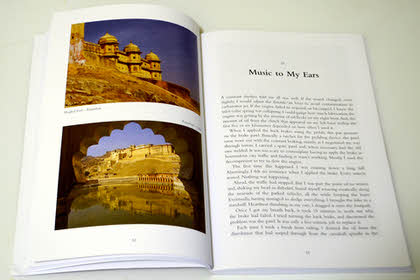 Both paperback and electronic versions of No Room for Watermelons are available through Amazon and I suppose that is the quickest and cheapest way to get a copy of this adventure. On the other hand, if you’d like something a little more personal and meaningful, signed copies can be had directly from the author
Both paperback and electronic versions of No Room for Watermelons are available through Amazon and I suppose that is the quickest and cheapest way to get a copy of this adventure. On the other hand, if you’d like something a little more personal and meaningful, signed copies can be had directly from the author  I have now participated in every one of the Cincinnati
I have now participated in every one of the Cincinnati 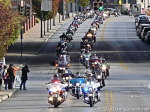
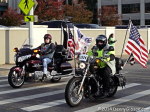
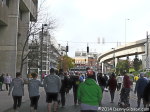

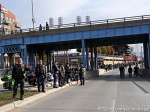
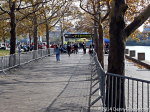
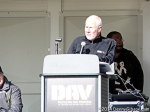
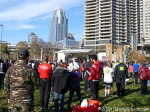
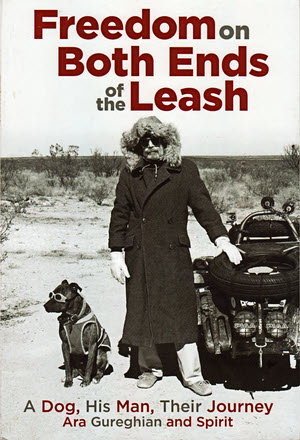 I really looked forward to the publication of this book. I certainly enjoyed reading it and expect to enjoy reviewing it once I get started but reviewing a book that is near impossible to describe isn’t all that easy. Saying it is the story of a man and dog traveling around the US on a motorcycle isn’t wrong but it sure is incomplete. The man, Ara Gureghian, and the dog, Spirit, have been traveling around the US on a motorcycle since November of 2006 with no plans to stop. I’ve followed their blog since April, 2007, and I have no plans to stop, either. When they started their journey, they were not leaving a home where they planned to someday return. They did acquire some land fairly early on and they do spend winters there but even it is more of a base camp than what most would call a home. From the beginning, Ara had called his online journal The Oasis of My Soul and the ten acres of Texas that his mother bought for him instantly became known as The Oasis. One definition of oasis is “something that provides refuge, relief, or pleasant contrast” and that is something both man and dog needed. Ara had suffered the painful loss of his son and Spirit has suffered abuse from a previous owner. Almost everything — the riding, the writing, the sunrises, the stars, the sunsets — is therapy to some degree but the writing is particularly therapeutic. Ara wrote, and continues to write, his journal for himself. He writes about his travels, his surroundings, and his thoughts. This book is something of a “Reader’s Digest” version of the journal. Neither book nor journal actually tries to be a travel guide or provide insights into living. Nonetheless, they do both.
I really looked forward to the publication of this book. I certainly enjoyed reading it and expect to enjoy reviewing it once I get started but reviewing a book that is near impossible to describe isn’t all that easy. Saying it is the story of a man and dog traveling around the US on a motorcycle isn’t wrong but it sure is incomplete. The man, Ara Gureghian, and the dog, Spirit, have been traveling around the US on a motorcycle since November of 2006 with no plans to stop. I’ve followed their blog since April, 2007, and I have no plans to stop, either. When they started their journey, they were not leaving a home where they planned to someday return. They did acquire some land fairly early on and they do spend winters there but even it is more of a base camp than what most would call a home. From the beginning, Ara had called his online journal The Oasis of My Soul and the ten acres of Texas that his mother bought for him instantly became known as The Oasis. One definition of oasis is “something that provides refuge, relief, or pleasant contrast” and that is something both man and dog needed. Ara had suffered the painful loss of his son and Spirit has suffered abuse from a previous owner. Almost everything — the riding, the writing, the sunrises, the stars, the sunsets — is therapy to some degree but the writing is particularly therapeutic. Ara wrote, and continues to write, his journal for himself. He writes about his travels, his surroundings, and his thoughts. This book is something of a “Reader’s Digest” version of the journal. Neither book nor journal actually tries to be a travel guide or provide insights into living. Nonetheless, they do both.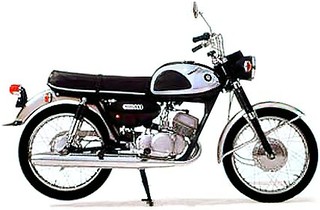 Dates from this period are a little fuzzy but I think it was not long after the Falcon Futura breathed its last that I acquired the Suzuki X-6 Hustler. A friend had bought it new then gave me a good deal on it when he went to New York to work his way to Europe as he had done once before. The working passage never quite came together and he returned after a few months and I offered to return the bike. He declined and I’m pretty sure part of the reason was pure kindness as he knew how much I was enjoying it.
Dates from this period are a little fuzzy but I think it was not long after the Falcon Futura breathed its last that I acquired the Suzuki X-6 Hustler. A friend had bought it new then gave me a good deal on it when he went to New York to work his way to Europe as he had done once before. The working passage never quite came together and he returned after a few months and I offered to return the bike. He declined and I’m pretty sure part of the reason was pure kindness as he knew how much I was enjoying it.
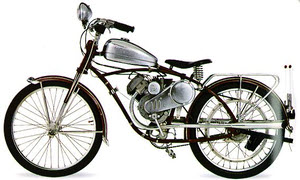 It was 1962, I was 15 years old, and I was going mobile. Fourteen and fifteen year old Ohioans can still ride two and three wheelers with “helper motors” but both vehicle and and rider require a license. Plus the motor must be under 50 CC and 1 HP and incapable of moving the rig faster than 20 MPH. Shish!
It was 1962, I was 15 years old, and I was going mobile. Fourteen and fifteen year old Ohioans can still ride two and three wheelers with “helper motors” but both vehicle and and rider require a license. Plus the motor must be under 50 CC and 1 HP and incapable of moving the rig faster than 20 MPH. Shish! Dale’s moped had a capital ‘M’ — and a hyphen. It was a real Mo-Ped sold by Sears under the Allstate brand. They were made, apparently, by Puch in Austria. Our two mopeds did the same job but they sure had their differences. The Mo-Ped had a two-cycle 50cc motor with a two speed transmission and chain drive. Power from the Whizzer’s larger four-cycle reached the rear wheel through a belt. Belts and pullies slip; Chains and gears don’t. Compared to the Whizzer, the Mo-Ped was a jackrabbit off the line. The Whizzer would slowly lumber into motion usually helped by my feet on the ground or on the pedals. The Whizzer’s top end was well above the Mo-Ped’s so I’d usually whiz by, to show I could, before settling down for a side by side cruise. When first setting out, the Mo-Ped could be started on its stand with a little pedal pushing. The Whizzer could, in theory, be started by pedaling but it was a real chore. The method of choice was to start pushing it, release the clutch, (‘pop’ is not a word often associated with the Whizzer belt idler.), and jump on after the bike started but before it ran away.
Dale’s moped had a capital ‘M’ — and a hyphen. It was a real Mo-Ped sold by Sears under the Allstate brand. They were made, apparently, by Puch in Austria. Our two mopeds did the same job but they sure had their differences. The Mo-Ped had a two-cycle 50cc motor with a two speed transmission and chain drive. Power from the Whizzer’s larger four-cycle reached the rear wheel through a belt. Belts and pullies slip; Chains and gears don’t. Compared to the Whizzer, the Mo-Ped was a jackrabbit off the line. The Whizzer would slowly lumber into motion usually helped by my feet on the ground or on the pedals. The Whizzer’s top end was well above the Mo-Ped’s so I’d usually whiz by, to show I could, before settling down for a side by side cruise. When first setting out, the Mo-Ped could be started on its stand with a little pedal pushing. The Whizzer could, in theory, be started by pedaling but it was a real chore. The method of choice was to start pushing it, release the clutch, (‘pop’ is not a word often associated with the Whizzer belt idler.), and jump on after the bike started but before it ran away.